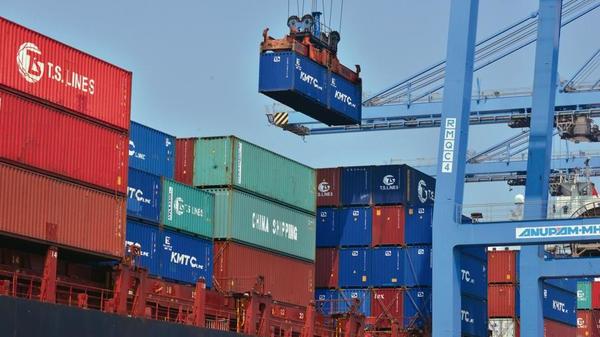
Domestic market allure 'misleading:' ex-CEA Arvind Subramanian's paper
As the Centre strives for 'atmanirbharata', a research paper co-authored by former chief economic advisor Arvind Subramanian has said India should pay more attention to exports and should not be blinded by the "misleading allure of the domestic market".

As the Centre strives for ‘atma nirbharata’ and Finance Minister Nirmala Sitharaman looks to boost local consumption with sops for government employees in an attempt to revive the economy brought to its knees by the coronavirus, a research paper co-authored by former chief economic advisor Arvind Subramanian has said India should pay more attention to exports and should not be blinded by the “misleading allure of the domestic market”.
In India, domestic demand is assuming primacy over export-orientation. Also, trade restrictions have been on the rise, reversing a trend that has been on for three decades, the paper, ‘India’s Inward (Re)Turn: Is it Warranted? Will it Work?’, by Subramanian and Pennsylvania State University professor Shoumitro Chatterjee, said. “Resisting the misleading allure of the domestic market, India should zealously boost export performance and deploy all means to achieve that,” it said.
Related News: Indian economy to contract by 10.3% in 2020; worst contraction on record: IMF
According to the paper, “abandoning” the export market will amount to “killing the goose that lays golden eggs”. It would indeed be “killing the only goose laying eggs”, it said. “Alas, to embrace ‘atma nirbharata’ is to choose to condemn the Indian economy to mediocrity,” the paper said.
India talked about ‘atma nirbharata’ even before the COVID-19 pandemic struck, it pointed out and noted that the “inward orientation” is based on three “misconceptions” — that India’s domestic market is big, it is responsible for the economic growth that the country has witnessed and not exports, and that exports don’t have much prospects as the world “deglobalises”.
According to the paper, India can still tap a large exports market, especially in labour-intensive sectors such as clothing and footwear. However, it can make the most of these opportunities only by being more open and globally integrated.
The research paper said India’s market size measured by consumers’ purchasing power is not big. “It is much smaller than the headline GDP number, much smaller than China’s, and only a small fraction of the world market. The reason is that India has many poor consumers, while the rich tend to be large savers, limiting their consumption,” it said.
Stating that India is “overly pessimistic” about export opportunities in a world that is deglobalising, the paper said it is not clear if deglobalising is indeed happening, at least in services, which accounts for more than 60 per cent of India’s GDP. Even if it is, India’s export share, which is much smaller than even Vietnam’s especially in manufacturing, could grow rapidly through market share gains, it said.
India has major opportunities “in low-skill manufacturing and services, which it could exploit in the post-COVID-19 environment where firms are looking to exit China and diversify their sources of supply”, the paper said.
Related News: India can’t depend on US-led Quad to end impasse with China
The government has been trying to give a push to its ‘atma nirbhar Bharat’ policy with measures aimed at encouraging local manufacturing. On Monday, Sitharaman had announced LTC cash vouchers and special festival advance for government employees in an attempt to boost consumption. She had also announced 50-year interest-free loans of Rs 12,000 crore for states to increase capital expenditure as the economy veers, according to the International Monetary Fund (IMF), towards an over 10 per cent fall in FY21.
On Tuesday, the IMF had said that India’s gross domestic product (GDP) will fall by 10.3% in the current fiscal, due to the greater-than-expected decline in economic activities in the first quarter caused by the restrictions imposed to control the spread of COVID. This is much higher than the 4.5% drop it had forecasted in June.


